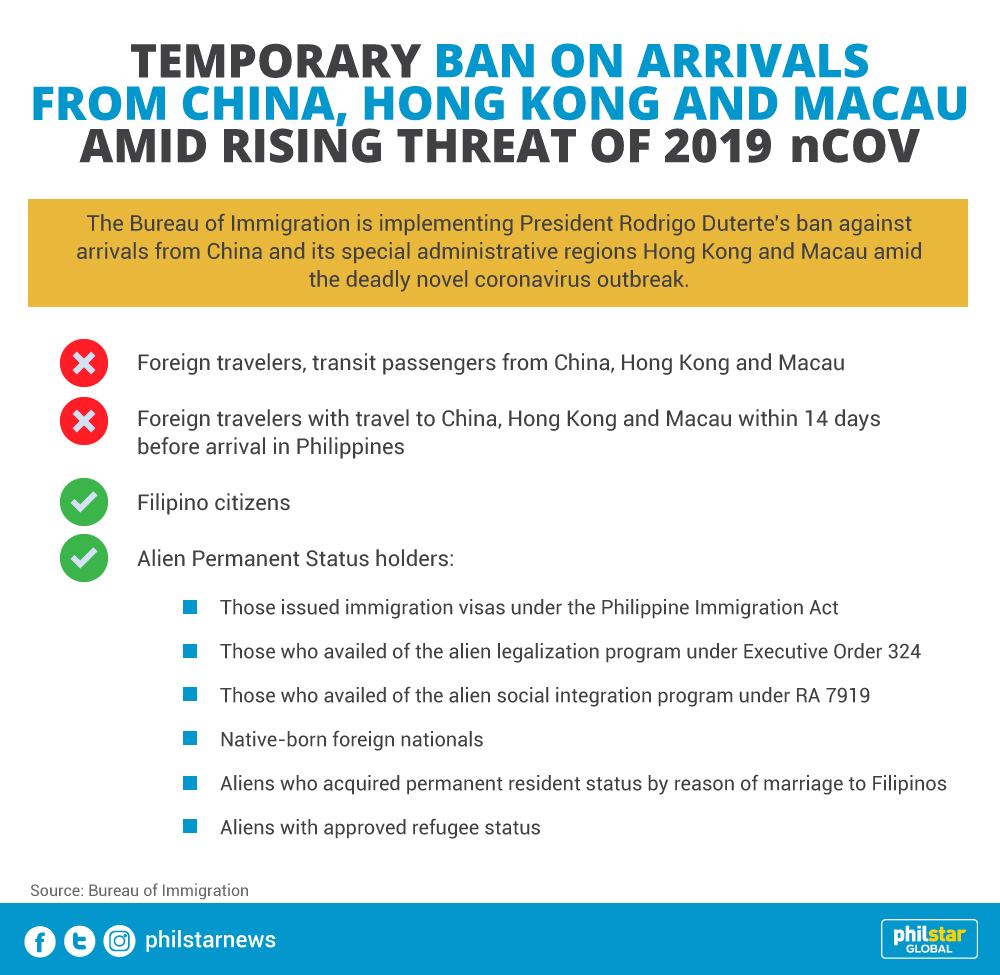The ban on arrivals from China, Hong Kong and Macau explained

MANILA, Philippines — The Bureau of Immigration on Wednesday repeated its guidelines on the temporary barring of arrivals from the People’s Republic of China and its special administrative regions Hong Kong and Macau amid the rising threat of the deadly novel coronavirus.
"We have instructed our men at the ports to actively participate and support efforts to combat the spread of the 2019 nCoV ARD," Immigration Commissioner Jaime Morente said in a statement.
Bureau spokesperson Dana Sandoval explained the travel ban in a briefing at the Palace on February 3 but the BI issued the clarification to clear up any confusion.
The Immigration bureau is implementing President Rodrigo Duterte's expanded travel ban issued on Sunday, February 2, the same day the Philippines reported its first death due to the virus outbreak that originated in Hubei province, China.

Morente stressed that the Immigration bureau is not singling out specific nationalities but are rather “restricting travel to and from areas of concern.”
Those who are exempted from the travel ban, including flight crew, “shall be turned over to the Quarantine Bureau for their assessment, together with a copy of their arrival cards.”
While travelling to China and its SARs are temporarily suspended, BI said that the following may be allowed to depart the Philippines:
- A part of government delegation conducting official duties
- member of the World Health Organization
- member of other agencies involved in fighting and containing the spread the virus
Morente also sought for the understanding amid the travel ban, as he stressed that the measure is temporary.
“The directive of the President follows the recommendation of the Department of Health, which is in line with advisories from the World Health Organization,” he added.
BI provides info for suspected nCoV cases
Morente also stressed that the BI has been supporting the DOH in tracing suspected nCoV cases by giving information based on its database. “We are able to give them the data needed even before it is asked, in less than 24 hours,” he said.
Airport procedures require foreign nationals arriving to the country to submit an immigration arrival card to the Bureau, while passengers submit a customs declaration form for the Bureau of Customs. A health declaration card is also submitted to the Bureau of Quarantine.
Health Secretary Francisco Duque III told the Senate Tuesday that only 17% of the 331 airplane passengers who interacted with nCoV carriers have been contacted.
Duque claimed that Philippine Airlines and Cebu Pacific are not sharing the contact details of the passengers due to confidentiality, but both airlines denied this.
DOH on Wednesday afternoon also reported the third confirmed case of nCoV in the Philippines. It said that it has started contacting the persons who may have come in contact with the 60-year-old Chinese woman who has since returned to her country.
As of this writing, there are 133 recorded persons under investigation for the virus. Of these, 63 are Filipinos while 54 are Chinese.
- Latest
- Trending
































